In its current ownership for over 50 years, this Mk.II Velocette KSS has proved a solid companion, steadfast and reliable, for decades.

Words: James Robinson
Photographs: Gary Chapman
Enjoy more Classic MotorCycle reading in the monthly magazine.
Click here to subscribe & save.
Fine machine though it is, that the Mk.II KSS was the ultimate development of the road-going overhead camshaft Velocette is, in many ways, a great shame. Before plenty take to their keyboards to point out the error of my ways – with the avenging army led by my friend Rob Drury, owner of the example featured here – let me explain my reasoning…
My point relates to potential. The overhead camshaft layout was, as we now know, the eventual way forward for motorcycle engines, while the Mk.II road-going cammy had advantages others didn’t; for example, while an International or Manx Norton never made it to fully top end, the 1936-introduced KSS/KTS had them from the start. It was a sophisticated engine, while its physical size (including the chassis it was housed in) meant, surely, it was ripe for an increase to 500cc, though the big problem was that the engine was labour intensive to produce – it was reckoned it took four times as long to make/assemble a ‘cammy’ than it did for Velocette to make one of its pushrod engines.
The other problem being, of course, that Velocette’s own pushrod design, introduced first with 250cc MOV in 1933, joined by the 350cc MAC in 1934 then the 500cc MSS, was just so darned good, while the smaller iterations were also light too. Much lighter than the Mk.II anyhow. Many would argue that the MOV/MAC has more in common with the beloved light and lithe Mk.I cammies (the Mk.I KSS, the longest running model, was made 1927-35) than the Mk.II KSS did.
The result being that the Mk.II has never really had the cache and glamour of the earlier versions, or the racing ones, but they now have their many advocates. As Rob explains:
“Mk.II KSSs were quite unfashionable in Velo circles for many years, but I regard them as probably the best road bike that they ever made. Few bikes in the 1930s could have got near them – they were robust, willing, mechanically quiet, oil-tight, extremely smooth, very sophisticated and had very pleasing lines.”
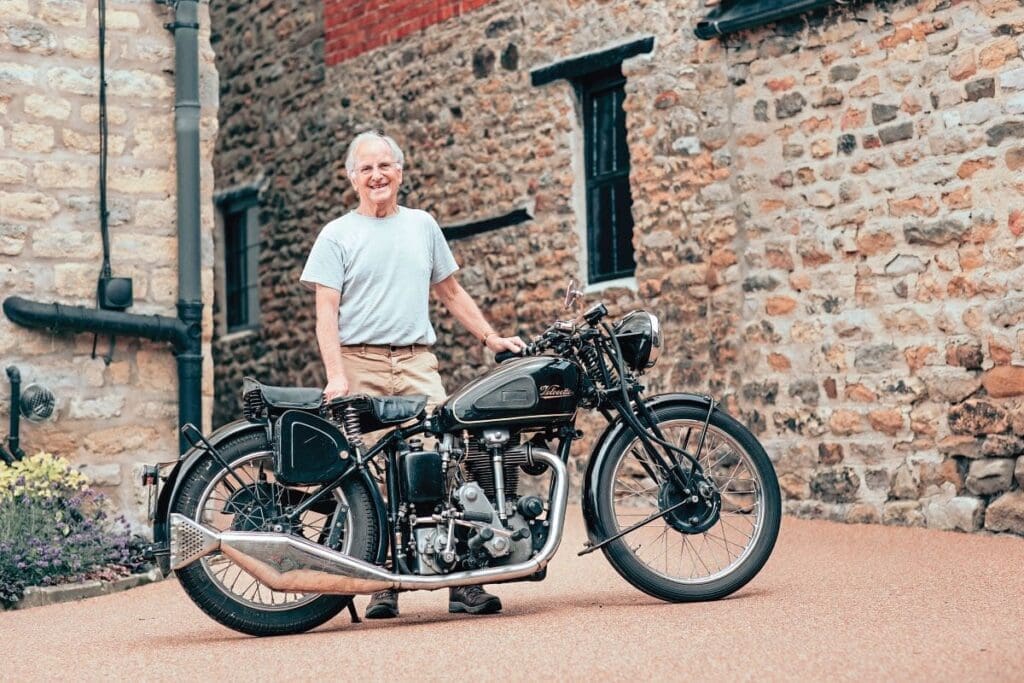
He’s not alone in appreciating the model, as we’ve seen in recent years, as it has been reappraised by the Velocette cognoscenti, now recognised as being a very good thing. They are, though, not a sportster, despite the ‘SS’ standing for ‘Super Sports.’ But when one accepts that and takes them as they are – so all the qualities Rob lists, which are good reasons to be well regarded – then they deserve the relatively newly found respect. But I still can’t help thinking what a 500cc version would’ve been like, particularly if it had gained the swinging arm type frame that was used for the Mk.VIII KTT of 1939, but which a version of had been used by the works racing team since 1936. But I digress…
The Mk.II KSS was a development of the first overhead camshaft Velocette engine, designed by Percy Goodman in 1923 and eventually released for public sale in 1925, when it was tagged Veloce, incidentally. From the model shown in the initial catalogue, it was quickly revised and improved, specifically with regards to the total loss oiling which was ditched in favour of a fully circulating system; no total loss machines were sold. It has to be remembered that prior to the first Model K,Velocette was and had been a maker of two-strokes (save a short-lived four-stroke Triumph clone and an inlet over side exhaust model, plus a couple of others, in the early days) so to come to the market with such an advanced design represented not only a go-ahead attitude, but a supreme faith in the company’s abilities – in 1925, across the automotive world total loss oiling and side-valves were the norm, overhead valves were rather sporty, and overhead camshaft was, frankly, otherworldly and supremely exotic.
It wasn’t misplaced faith either, as was quickly shown. That basic engine, with Oldham couplings used in the bevel drive shaft and a hunting tooth bevel drive system (where every tooth of the pinion meshes with every tooth of the gear achieved by having the extra tooth on the larger of the wheels, ensuring that its total number of teeth is not a multiple of the smaller) used to reduce wear, by more even distribution, was the basis of not just the motorcycle we feature here, but the famous KTT racers and their derivatives, machines which won the first two 350cc world championships. If that doesn’t prove the basic excellence of the design, nothing does.

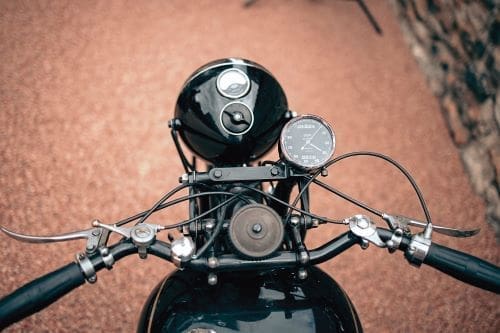
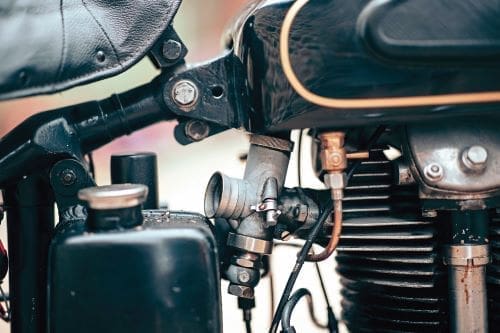

The initial Mk.I cammies – the KSS and all its derivatives, which are too many to list here, though the KTS (ostensibly a KSS with valanced mudguards, with the T standing for Touring) was, after the KSS, the longest serving model. The Mk.II was launched at the 1935 motorcycle show and featured a brand-new alloy cylinder head, with valve gear fully enclosed and carburettor at a downdraught angle. Tappet adjustment was by an eccentric rocker spindle, as had been used on some racers earlier. The new engine was housed in a frame that came from the racetrack too, being based on the Mk.V KTT item. There weren’t overmany changes to the new model, it being built up until the Second World War stopped play, then coming back following peace. The last machines, made during the last half of 1948, had Dowty Oleomatic ‘air’ (so actual no spring) telescopic front forks, and a different petrol tank.
Rob Drury has long loved Mk.II KSSs and has owned ‘lots’ (his words) of them over the years. He is a Velocette man through and through, despite dalliances with other marques over the years, including, of late, Moto Guzzi and Matchless; we’ve featured one of each of those from his collection, as well as his exquisite Benelli racer, plus his Indian Velo was on the cover of our January 2016 issue too, while his two Mk.I cammies made the November 2020 cover.
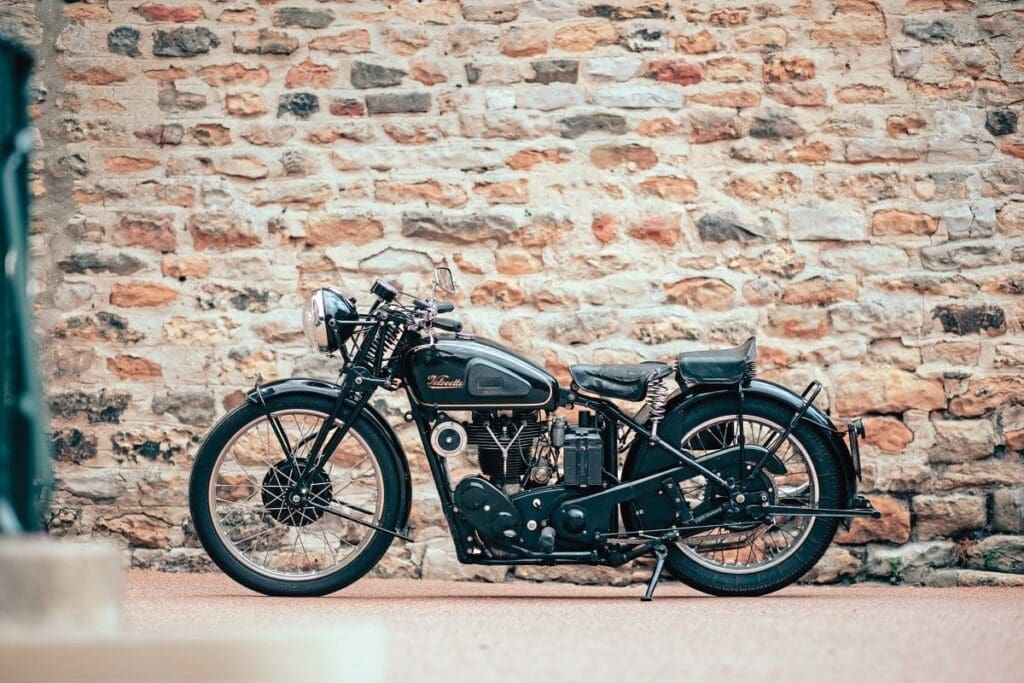
I first met Rob in 2009 when he replied to my ‘wanted’ advert for something ‘vintage and sporty,’ in Old Bike Mart, which ended up with us buying a Mk.I KTT off him. At that point he lived in the Lincolnshire town of Louth, while I was in Horncastle, 15 miles away (with Cadwell Park in the middle, incidentally). Since then, we’ve remained friends, although now over 200 miles apart, owing to us both moving, while he’s been generous enough to allow me to ride pretty much all his motorcycles, including, memorably, his Mk.VIII KTT at Dijon in 2011. Though he’s sold that particular Mk.VIII, he has recently restored another, which we’ll be featuring in due course.
For all the time I’ve known him, Rob’s always had this Mk.II KSS and it’s his ‘go to’ machine, there’s no doubt. He explains how it all came about:
“My very first KSS was a post Second World War Dowty [telescopic] fork model which I got in 1964 when I was 17. It was my second bike, the first was a 1956 Tiger Cub.
“That KSS was wrecked when a taxi turned in front of me, but I bought the wreck back and later sold the engine to someone who fitted it into a spring frame – which I later bought. I still have the crankcases and cylinder head.
“In 1970, this bike, registration DFP583, was dumped on waste ground by the ‘North Wall’ of Grimsby fish docks and found by my friend Ralph Richardson, who charged me £2.10/- for transporting it in his van to my house. It was at that point a 1936 MSS [which shared all cycle parts with the Mk.II KTS and most with the KSS] red rust with mudguards like lace curtains, I recall.
“With ideas of making a racer out of it, it was stripped and the frame cleaned and painted. That project only got as far as a refurbished rolling chassis.
“The Mk.II KSS that I was using then was untidy, so I switched the engine and gearbox into the refurbed MSS chassis temporarily – and that’s where it has stayed for the next 50 years.
“It’s been a happy collaboration that has been my most used bike; it’s the one that I would ride to the ends of the earth. For a bitsa of dodgy provenance, it’s been a great success, even though there are no heroic tales to tell. It’s not the finest example of originality. We did ride it two-up and fully loaded to the Rhine Valley one year, it never missed a beat. It’s been remarkably reliable and always a pleasure to ride.”
So what is a Mk.II like to ride?
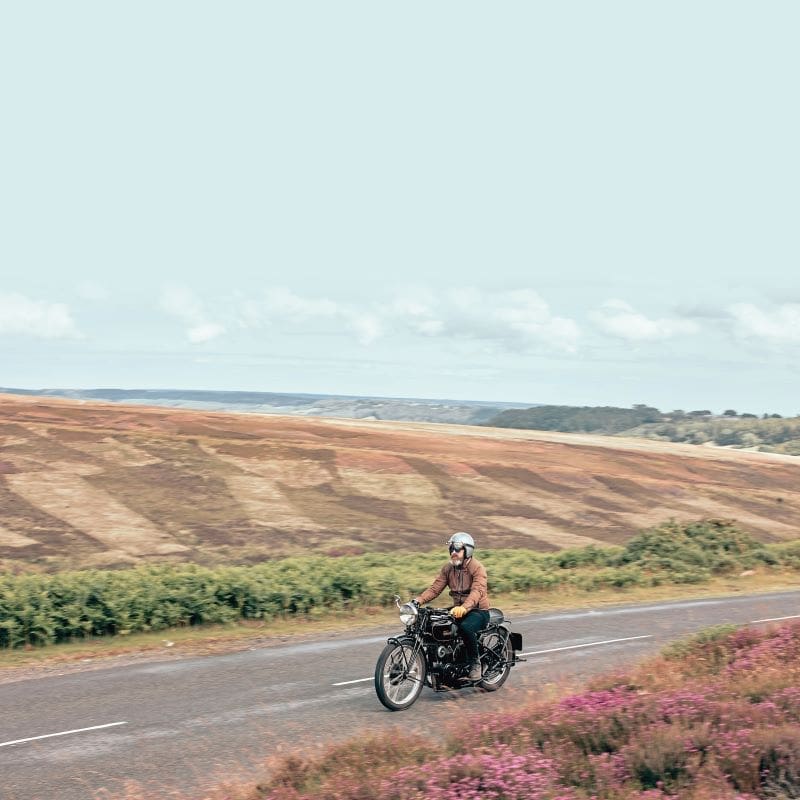
Well, I’ve done quite a lot of miles on them, I owned one for quite a time too – now owned by Rob’s friend Keith Lax; I met Keith through Rob and later sold him my cammy – while my dad’s had one for years too, which I’ve ridden quite a bit. With regards to riding them, I’m always reminded of a phrase the late David Earnshaw used to say, relayed to me by Richard Rosenthal; David reckoned if he needed to ride to the end of the earth, he’d go on a Model H Triumph. I’m minded to say a Mk.II KSS wouldn’t be a bad choice either and I know Robwould agree.
The Mk.II KSS is not a sporting machine, but it’s not a slouch, either, with performance the same as pretty much all the other 350s available in the mid-to-late 1930s and 40s. And there came its problem, especially as Velocette’s own pushrod MAC was among those which offered a similar performance, but for less money and with less weight too, as the Mk.II was always a heavy machine, despite that beautiful cast-alloy cylinder head. On launch in 1936 a KSS (or KTS) was retailed at £62-10s; even Velocette’s own (and quite superb) 500cc MSS was cheaper, at £59-10s.
As for weight – a fully-equipped KSS, as featured here, was 345lb (156kg), as opposed to 280lb (127kg) for its MAC stablemate. For comparison, a 1966 Triumph Bonneville was 363lb/165kg and a 1950 Vincent Comet 390lb/177kg. The main reason for the Mk.II’s weight is its frame; it’s a big, solid lump for sure. Though that does mean that the KSS feels like a grown-up machine, and it affords plenty of room for the rider. Vintage and 1930s machines often feel dinky and cramped to us ‘better upholstered’ homo sapiens of today, which is another plus for the Mk.II. My dad always reckoned that his Mk.II KSS ‘suffered’ more on bumpy roads than lighter, earlier rigid framed and girder forked machines, which perhaps have some element of truth to it, but I have to say, riding Rob’s, it’s lovely and comfortable.

As a Velocette item should be, the clutch is delightfully light too, while the gearbox is slick, even if the long lever forces rather slow changes; it’s down for first on pre-Second World War Velos, which was changed postwar to the other way to be the same as most other makers, though all Drury Velos follow the prewar shift pattern, achieved by reversing the camplate.
Brakes are good and the engine lively and willing, as well as mechanically quiet. It is lovely and I must admit I do appreciate it perhaps more now than when I had my own; then, I’d just get a bit frustrated with its limited performance, though, actually, one needs to just take it as it is and enjoy it for that. Riding around the Yorkshire Moors near where Rob now lives, well, it’s an absolute pleasure.
Reading the riding impressions recorded during Motor Cycling’s February 8, 1940, road test, which is glowing in its praise and endorsements as things tended to be in those days, it’s reckoned that they’d managed to hit 68mph in third gear and 78mph in top. Optimistic, I’d say, but then it was of course being ridden with rather more abandon than we’d entertain today, plus, well, models supplied to the press weren’t always completely standard… And there’s certainly the potential for plenty more performance to be extracted from the engine, as has been proven in vintage racing over the years; witness Keith Riley’s Mk.II of recent times for example, while Ronnie Hazlehurst won the 350cc Junior Clubman’s TT of 1948 on a KSS. And then there was the two-way 119.87mph average of Lloyd Bulmer, achieved in the ‘Rollie Free position’ (and shirtless too) at Bonneville in 1952. But the sweet spot on a standard Mk.II is around 50-55mph, which is perfect for backroad riding.
Thing is though, I’ll come back to my opening statement and how it’s a shame this was the final development of the Velocette road-going camshaft line, to attempt to qualify it.I’m not doing down the Mk.II KSS like this one at all, which is in every way a truly charming motorcycle, but just that there was so much more potential which could’ve been unlocked, although perhaps then, it’d have ruined the whole thing – the phrase ‘over egging the pudding’ comes to mind. So maybe it’s best left as it is.
Advert
 Enjoy more The Classic MotorCycle reading in the monthly magazine. Click here to subscribe.
Enjoy more The Classic MotorCycle reading in the monthly magazine. Click here to subscribe.



